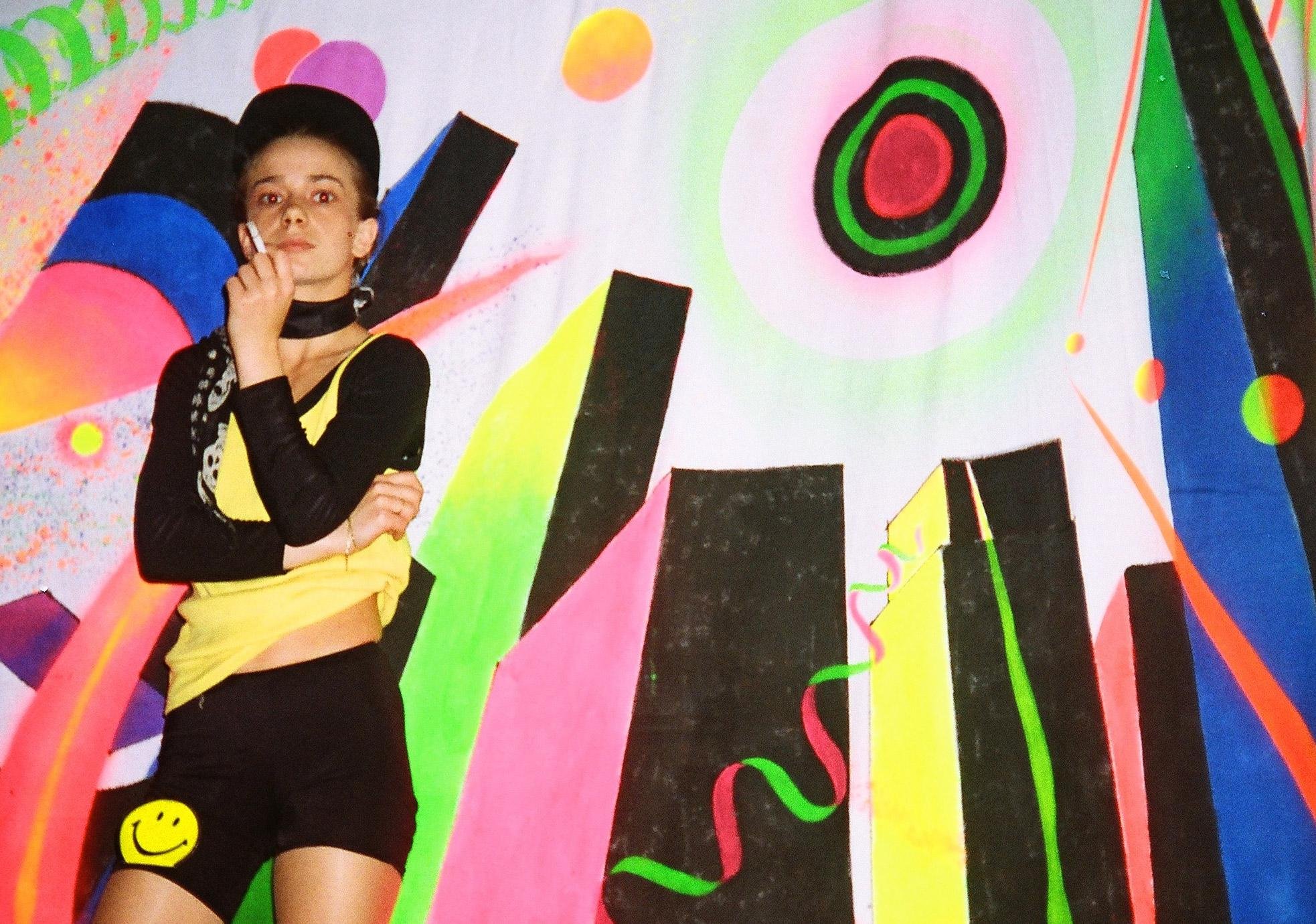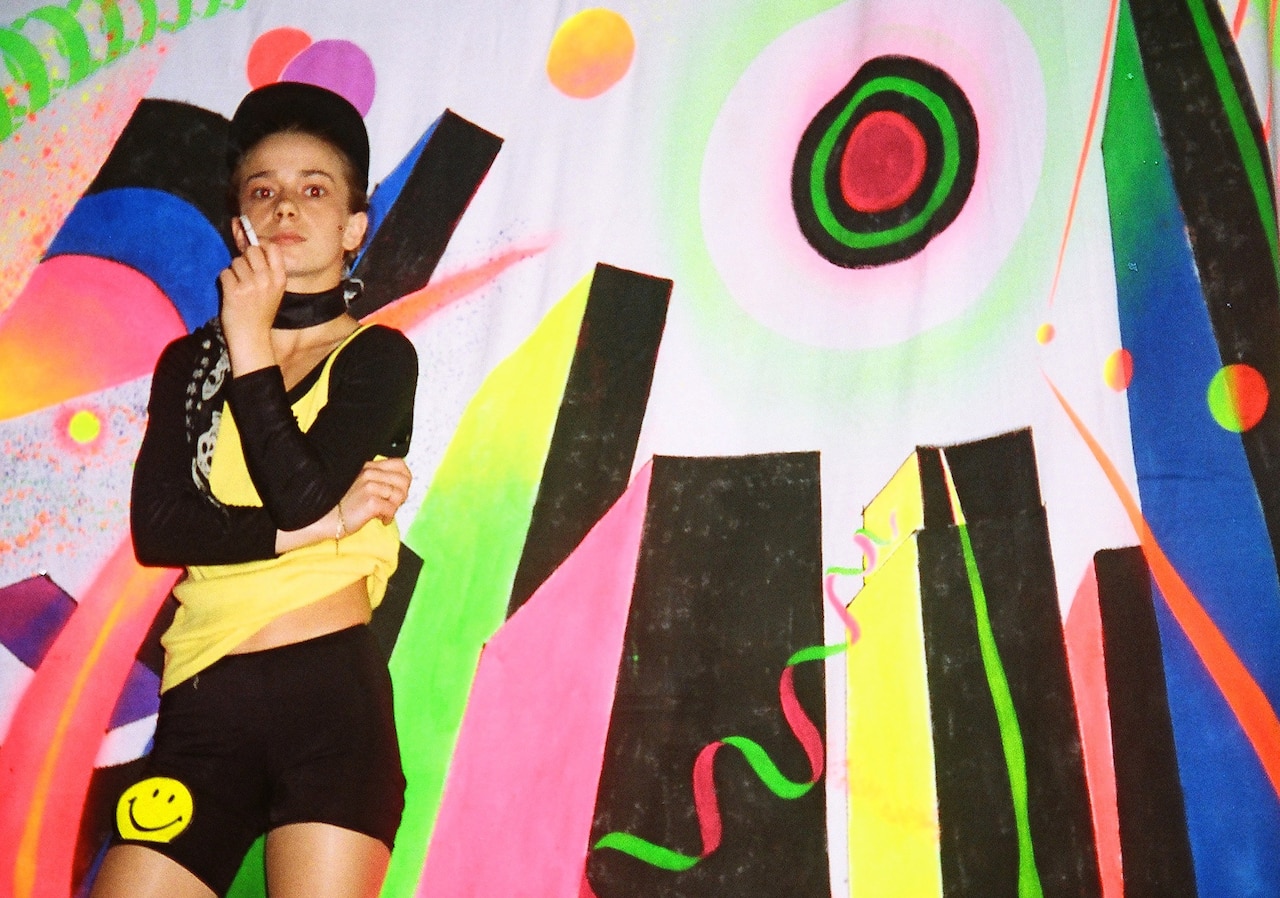
A Brief Republic of Partying
Between 1990 and 1994, young rave organizers in France pursued a new party culture that was as philosophical as it was illegal. This is a portrait of a generation of carefree visionaries.
The current electronic music scene in France can trace its lineage directly to a specific moment in the early ’90s, when a small group of twenty-something militants decided to rescue the nascent house and techno genres from discothèques and breathe new life into them by presenting the music in alternative environments.
Few in number but strong in spirit, the group included Luc Bertagnol, Manu Casana, Pat Cash, Bernard Poussaint, Fabrice AKA Rakham, Juan Trip, Cyrillotoman, Fabrice Gadeau and Frédéric Djaaleb. Born between 1957 and 1970, their early lives were affected, often indelibly, by the libertarian atmosphere and artistic experimentation of the 1970s, the explosion of punk, and especially by the wider post-punk and New Wave musical movements of the ’80s.
Around 20 years old when the ’90s broke, these frenzied partiers led associations and collectives with inventive names like Rave Age, Cosmos Fact, Beat Attitude, Dragoon Fly, Tekno Tanz, Gaïa, Take No System, Happy Land, Trans Body Express and Fantom. They embodied the positivity, energy and utopianism of the emerging decade, with raves held in surprising, unprecedented spaces like abandoned factories and tunnels, building sites and dumps, cinema studios, forest clearings, campsites and even mushroom farms.
Journalist Patrick Rognant, one of the burgeoning scene’s principal media agitators via his Radio FG show Rave Up, cheerfully recalls them as “high-level lunatics.” “They were all pretty out-there, easily the most zealous of the bunch, more so than the performers and DJs who had no intention of risking their lives, their savings or freedom all in the name of partying.”
I don’t think I was carefree. I cared a lot! We were convinced that we were going to change the world.
Far from the tour organizers or rock concert producers of the ’80s and even further from the future French Touch industry professionals or star DJs of today’s French scene, they were a gang of “hysterical, carefree” fanatics according to Rakham, one of the survivors of the era, who continues to animate the trance circuit with his organization, Gaïa. They took senseless risks for themselves and their audiences in assembling thousands of enthusiastic ravers, whether thirty meters below ground or amidst the rubble of a squat. “Of course,” Rakham says in retrospect, “we were young, and we thought we were unstoppable.”
“They were all off their heads hysterical, myself included,” laughs Frédéric Djaaleb, another one of the era’s party architects, and Jeff Mills’ future manager. “It’s thanks to these unique people, as well as other key members of the movement like journalist Patrick Rognant, that many walls have fallen. I’m very proud to have been a small part of this cultural shift in France. A lot has been said about the ’90s party vibe, but less of their sociological aspect – in particular, as melting pots for all kinds of generational, social, racial or sexual categories. Our generation modernized society, changing mentalities, experimenting with technologies, with video, with minimalism. We really did clear the way in some way for the year 2000!”
These organizers possessed an unshakeable faith in their right to party where and how they wanted, all the while aware of their position at the crest of an oncoming cultural revolution. As Luc Bertagnol, the first and the eldest, puts it, “I don’t think I was carefree. I cared a lot! We were convinced that we were going to change the world. At the time, I felt like I’d missed the ’60s, I’d been too young to experience the magic of that first Summer Of Love. To me, raving was a way of reviving that spirit of exploration, unity, utopia and hedonism, and to awaken a new consciousness. Our parties were a way of connecting to people, both electrically and electronically.”
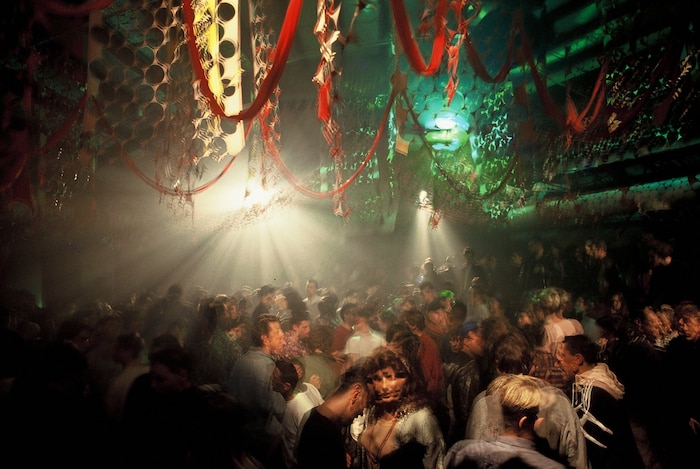
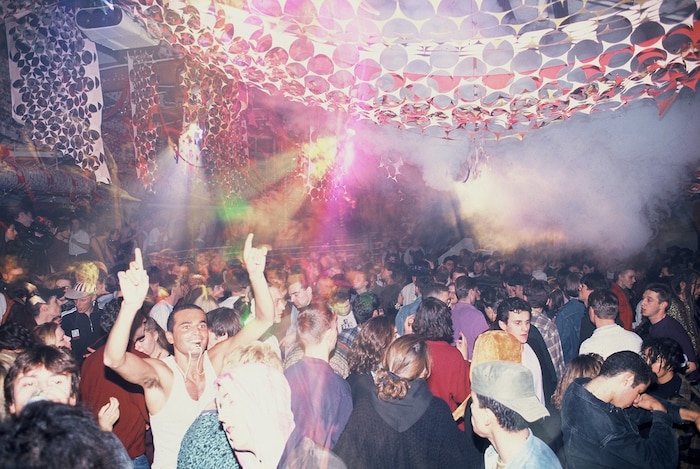
Of the parties he would organize at the Collège Arménien between 1990 and 1992, on a moored barge at the Pont de Puteaux, or at the Fort de Champigny, not to mention his seven legendary raves at Mozinor (a space on the top floor of a futuristic-looking parking lot in Montreuil), Luc Bertagnol considers them all a kind of smuggling. Or, he adds with unabashed emotion, a kind of “musical rebellion, a hardcore dedication to dance and music.” The rebellious definition fits him as well as it does the handful of surrounding French characters who, at some remove from the concurrent English, Dutch or German mega-rave movements, were reinventing a free and independent form of partying, before media attention and subsequent crackdowns and calamities would bring it to all to an end.
The end of everything and the start of something
In the spring of 2015, film director Xanaé Bove revived memories of the early French rave movement with an homage to that time, Ex-TAZ Citizen Ca$h (1987-1994). It’s a moving documentary dedicated to Pat Cash, one of the luminaries of what Bove would describe as a “brief republic of partying” driven by “a desire for joyful insurrection.”
A heroic figure in the Parisian nightlife of the late ’80s, Cash was a true character: mercurial, magnetic, chameleonic, a junkie and an overt dandy. His peers saw him as something between a Rammelzee, an Aga Khan, a Moses and an Andy Warhol, or even a Rocambole (the reformed thug and a hero of popular 19th century French literature). Passing through funk, hip hop and hardcore punk before discovering techno, Cash was pioneering in his organization of wild and Romanesque events that shook the walls of a Bercy warehouse (1990), an under-construction highway tunnel beneath the towers of La Défense (1991) and, a few months later, the belly of the Bastille Opera House’s building site.
It’s fitting that Cash’s parties, like those of other Parisian rave innovators, were held at locations marking the city’s architectural future, be they the construction sites of La Défense, the Opéra Bastille to-be, or abandoned sites arrayed along the eastern reaches of the Seine, an area populated today by institutions like the Bibliothèque Nationale de France, Cité de la Mode et du Design and Paris Diderot University. The beginning of the ’90s was a period of major urban transformation in Paris, as well as a time of more general political transition that could be defined as “the end of everything and the start of something,” to borrow the subtitle of Francois Cusset’s anthology A (Critical) History of the 1990s. This short period of festive euphoria was both chaotic and visionary, as the ravers razed forlorn ruins of the 1980s, those last whispers of post-punk, goth rock and industrial music, to better celebrate the hopeful arrival of a veritably cybernetic year 2000.
On a sociopolitical level, this period was marked by the Soviet perestroika, the fall of the Berlin Wall and of the last remaining Eastern European dictatorships, a certain liberalization of lifestyles during Mitterrand’s extended presidency, and the brief period of economic revival following the arrival of Bill Clinton in the White House. Patrick Rognant remembers: “After all the paranoia of the 1980s, particularly with the Cold War, we witnessed the end of a classical era and the unfolding of a modernist age of total uncertainty. ‘Look!’ people said, ‘The Wall has fallen, anything’s possible now!’”
The ravers initially communicated with their audience via two principal means: the FM radio and the Minitel (a French precursor to the internet). The first semblances of cyber-culture and the approaching internet revolution already seemed to be haunting the collective imagination. When interviewed by Xanaé Bove, former rave doyenne Eve Prangey put it aptly: “The future hadn’t yet happened.” But, evidently, it was already on everyone’s minds.
Conversion and renewed faith
The visionaries at the core of this French rave scene all allude to previous lives and a longing to escape suffocating circumstances before they found their freedom in partying. For the majority, the result of early morning resolutions made in the middle of a rave involved severing all ties with their past in pursuit of a clean slate.
The first Rave Age nights, known as the Collège Arménien and Fort de Champigny nights, were organized for a short time by two of Paris’s pioneers, Luc Bertagnol and Manu Casana, both of whom came from rock backgrounds. Bertagnol was a music journalist, notably for weekly French news magazine L’Express, and Casana a purebred punk child of the ’80s whose record label, Auto Da Fé Records, was responsible for the release of the first album by Pat Cash’s hardcore group, Cosmic Wurst, in 1989.
In Ex-TAZ Citizen Ca$h (1987-1994), Casana tells the camera how he discovered rave music in London in the 1980s while still a young punk. Some friends invited him to a night near Clapham Junction, which proved to be revelatory. “You get to a big warehouse, and you see the people packed around the entry, and then you pass through into a second warehouse with a hole in its roof. This is in January, and there’d been a lot of rain, so the floor was flooded. You see people swinging from ropes attached to metal pillars to reach the dancefloor without getting their feet wet. Further on was a row of dealers. After 20 minutes the ecstasy kicks in, and that’s when things get wild. There’s blacks, pakis, skinheads (my sworn enemies, as a punk) – an eclectic audience, for sure – and everyone dancing like crazy people. I lose my way, lose my friends, and spend ten hours chatting to people, wandering and dancing like I’d never danced before.”
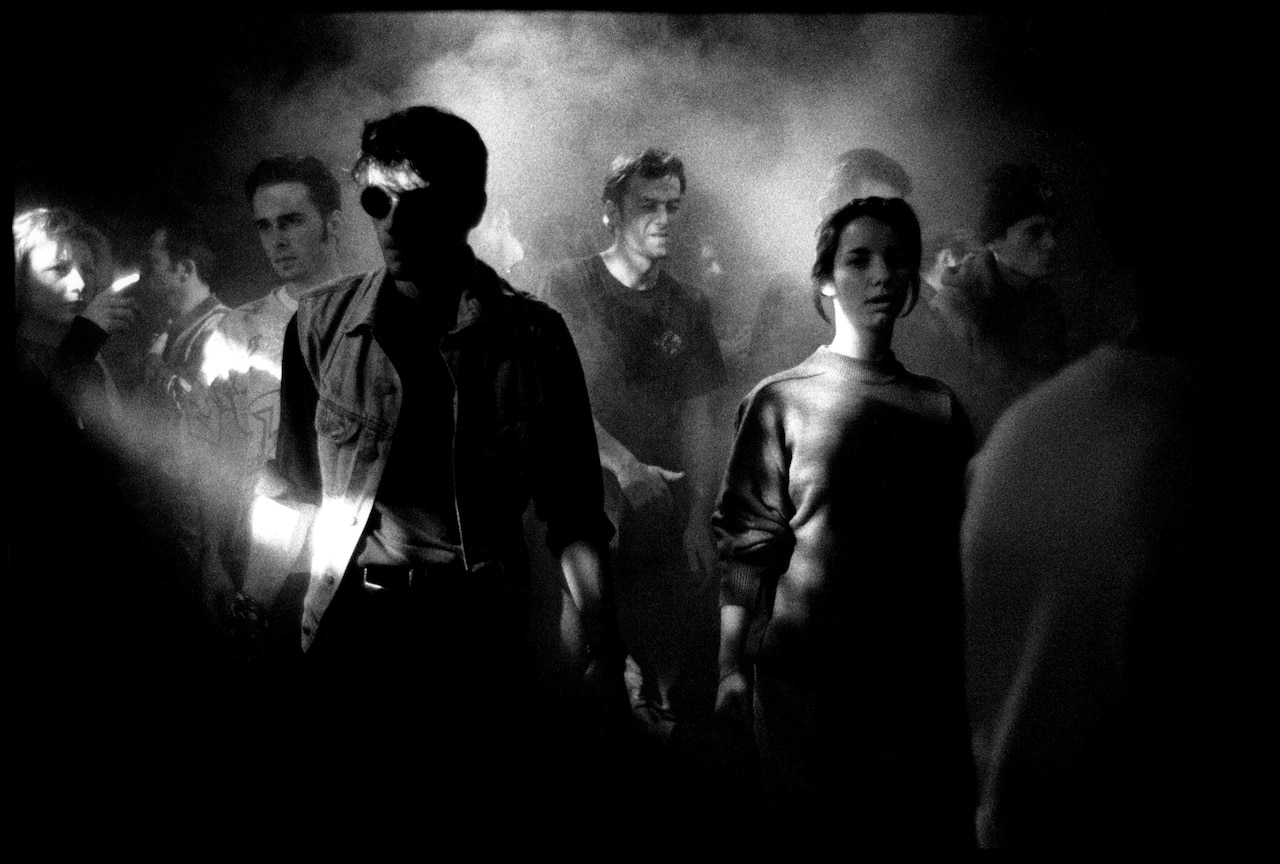
Casana’s former accomplice Luc Bertagnol has an even more emotional story. Born in 1957 amidst the Parisian working class, in the 1970s Bertagnol become involved with what was known as Groupes Autonomes, a resolutely radical group of extreme left-wing activists. Groupes Autonomes advocated the spontaneous practice of sabotage, rioting or squatting in rejection of what they saw as the more institutional forms of political combat, such as syndicalism or Trotskyism.
At the age of 22, Bertagnol contracted a rare rheumatic disease, ankylosing spondylitis, which ruled out any sport or dancing, and caused him such unbearable and paralyzing pain that he became addicted to heroin. Despite his political past and health issues, he still managed to make a name for himself in music journalism from 1984 onwards, working for the weekly magazine L’Express, covering Prince’s funk and the first stirrings of Raï and African world music. “I loved all that music,” he remembers, “but I must admit I was bored to tears by the end of the 1980s, my job at L’Express included. As far as I was concerned, the golden age of rock was long since dead. And I could boast about having lived it.”
Bertagnol’s breakthrough came in 1989, alongside some friends in a club in Tuscany, Italy, the Barcaccina, where two of the best DJs of the moment, Miki and Roby J, were residents. “A friend passed me a pill and I danced for five or six hours nonstop. Something magical happened inside me. It was like a sun illuminating my spirit and my consciousness. And physically, I could once again dance for hours on end. It was really like a cure. It helped get me and my friends off heroin. Like a kind of therapy, it helped us get over the ’70s and ’80s. Because after all those adventures with the Groupes Autonomes – the concerts, squats and general craziness – the ’80s had seemed a bit drab. Hopeless, even.”
Fabrice AKA Rakham, another influential rave organizer, actually discovered the world of rave thanks to Casana and Bertagnol. A child of the night, born of the discothèque (his parents owned their own club in Nemours, near Paris), he eventually became part of the industrial and gothic scenes while remaining close to extreme left-wing militants. Of his first rave, Rakham says that “The moment I walked into the Collège Arménien, where the party was at, I thought to myself: ‘Whoa, this is what I’ve been searching for, this is where I want to live. Forever. [laughs] I was really struck by the audience’s diversity, a blend of punks, gays and disco fans.”
Over the following months, Fabrice’s transformation was radical. He got rid of all his gloomy records, black leather clothes and handcuff accessories, replacing them with “bright Goa jackets, red slacks and red hair,” the probable origin of his nickname “Rakham,” unless the nickname, coined by Luc Bertagnol, had more to do with his pirate-like ability to seize and appropriate places. ”It’s quite simple,” Fabrice says with a smile, ”with rave, I went from syndicalist to hedonist.”
Frédéric Djaaleb’s story is not dissimilar from that of his colleagues. He grew up in Lyon, gay and of Algerian origin. A fan of New Wave and the synthetic music he describes as “cold,” Djaaleb had a hard time getting into the underground clubs and concert halls that in the ’80s were sometimes characterized by violence and the presence of skinheads. It was significant enough that he moved to Paris at the age of 17 to immerse himself in the club culture of the day. He was conscious of belonging to a new generation of gay men, ”less interested in image, more orientated towards music and dance,” trawling the clubs for new musical inspirations.
We had to fit all the gear, as well as the audience, through a single window. It was a real pirate party!
“I headed for Boy [a historic gay club in the Opéra district] a few days after its opening. I arrived at the entrance, pushed open the doors, and was hit by the full force of all that Belgian and New Beat music. Then I thought, ‘This is it, this is my world, this is music I don’t know, and it’s just amazing.’ Over the next two years I would go out at each night from midnight until six in the morning, to clubs like Boy, La Luna and Le Power Station.” He would go on to organize his first raves as part of the Happy Land collective (architects of one of the first official parties beneath the Arche de La Défense in 1992, headlined by LFO), and others in more clandestine locations.
Also active at the time was the organizer of the Invader raves, Bernard, who was also gay but had a decidedly more libertarian philosophy that drew on his experiences in the mid-’80s. Around 1985, Bernard left France for Sydney, Australia, where he was to discover Sleaze Ball, RAT Party and other Mardi Gras nights, “sometimes very decadent parties, blending queer and alternative cultures. These were the first nights that I experienced the repetitive beat that goes until morning,” he says. “It was the first time I heard walls shaking on a bed of smoky illuminated indie rock and electronic pop. It’s simple,” he continues with a nostalgic smile. “It was like being propelled ten years into the future.”
“Like a heart that would never stop beating”
The accounts of these “organizers,” itself a limited term in describing the efforts made by these spiritual warriors of pleasure and communion, have a profoundly humanist tenor.
Regarding the first party he organized alongside Manu Casana, Luc Bertagnol explains how they printed about a thousand flyers, distributed one by one in the street and the subway. “Depending on their look or demeanor, I’d go up to them and chat, sometimes for half an hour at a time. That’s how I actually met Jérôme Pacman, who quickly became one of the top French house DJs,” he proudly recalls.
.3e59a9fb.jpeg?auto=format&w=1280)
Poussaint’s efforts likewise evoke a similar do-it-yourself culture, embracing the spirit of solidarity and poetic mysticism of clandestine nights, which never cost more than 50 francs (about nine euro). With names like “Full Moon,” “Black Moon,” “1002 Nights” or “Final Frontier,” they were held in an Ivry squat (at the former factory of Société Anonyme de Télécommunications), in fields, woods, abandoned warehouses or mushroom farms.
“Some weekends when there weren’t any parties the ravers could go to, we’d figure out ways to improvise something. In any case, we spent our time scouting out locations, preparing them, which was what Pat Cash taught me,” explains Poussaint. “I was feeling my way through it at the time; things fell into place quite haphazardly. I had no money. I’d pay the soundsystem or the security team with a check on Thursday or Friday, and come Monday, I’d run to the bank to deposit the cash. It was never particularly profitable.”
In 1993, after gaining a few years of experience, Poussaint would attempt his most outlandish project yet: a party at 38bis Quai de l’Ourcq in eastern Paris, open 24/7 for 60 days between August and October, welcoming the various organizations and collectives of the time. The idea was that the music would be constant, “like a heart that never stopped beating.”
Rave: a user’s manual
The magic of the early ’90s raves, like the free parties that were to follow, was based around where they were held. For Rakham, “It was a question of finding spaces not at all meant for partying, that we would then appropriate for a night.” All of those involved share tales of scouring the outer limits of Paris and its tunnels, squats and wastelands, preparing the ground for future parties months in advance. “Sometimes it was risky,” Poussaint says, recalling an afterparty organized in a warehouse near the hôpital Saint Louis. “We had to fit all the gear, as well as the audience, through a single window. It was a real pirate party! We also organized quite a few raves in the many abandoned mushroom farms of the Paris catacombs.”
Rakham continues, “They were all wonderful. I remember one that we called ‘The Temple of Indiana Jones.’ Two thousand people showed up, thirty meters underground. But when it came to actually renting spaces and having to deal with an owner or a mayor, I would sometimes send my mother – as with my twenty-fifth birthday rave at the top of the Pompidou Centre – or, more often, one of my female friends who could make a better impression. That is how we managed to organize quite a few open-air parties in family parks, like in Souppes sur Loing, Vernouillet, Saint-Rémy Les Chevreuse or Cergy-Pontoise. We’d say it was for a concert. And of course, we’d never go back. The grass doesn’t grow back after a rave!”
With the ground prepared, all the relevant information would be diffused via the humble flyer handed out at parties and in record shops such as USA Import in Paris’s Marais quarter, Bonus Beat (which became BPM) and TSF (The Sound Factory) in Bastille.
Later, telecoms were also utilized to transmit location details, first through teletext services like Radio FG’s 3615 FG, or Libération’s 3615 Rave, which covered most of the news – the grand democratization of the internet arrived only in the second half of the ’90s. On the weekends, fans of house and techno would listen to Radio FG or Radio Nova, whose shows, like Rave Up or Happy Hour, assumed the responsibility of guiding the ravers through Paris.
The flyers or radio announcements often only mentioned a meeting place (usually at one of Paris’s city gates), where free shuttles awaited the ravers and where the organizers of the rave distributed a new flyer. “The exact location of the rave was revealed at the latest possible moment,” explains Rakham, “because the treasure hunt aspect created a sort of excitement and urgency within the audience. And sometimes we had fake flyers with phony addresses in case the cops or thugs showed up at the meeting points, to send them off to the other side of Paris.”
What’s most surprising, considering the often chaotic methods of organization involved in throwing these raves, was that they never led to violence, injuries, stampedes, deaths or violent battles with the police. They stand in stark contrast with later free parties like the Love Parade, where 19 people died during the 2010 gathering, or even Paris’ last Techno Parade, overshadowed by the death of a young boy who fell from the Statue de la République.
Overall, apart from a brief period when a gang of robbers made a series of attacks upon organizers and their ticket offices, imagining them to be full of cash, it’s as if this golden age of rave managed to avoid all of the traps laid by its detractors, be they the Renseignements Généraux (a now-defunct French interior intelligence agency), the prefects, police, mayors or, of course, certain sections of the media, which launched attacks upon the phenomenon beginning in 1993 with an incendiary article in the Communist review, Humanité.
If this short period passed without incident, it is in no small part thanks to the bravery of those organizers, who were as resourceful as they were reckless. Rakham claims he was able to get out of any situation. “You had to be passionate,” he confirms. “It was rock & roll. You had to fight, to deal with the pressure from landlords, the council, the anti-rave associations. It was a real slog and it required grit. But above all, you had to know how to negotiate! I always managed to keep smiling, but I could to adapt to anyone and to any situation, to any age, social or professional category. I personally had more problems with people coming over to scream, ‘Yeah man, great party!’ than I did with the authorities. And truth be told, I always managed to avoid fines and jail time. And that’s an art.”
This art, this instinct for improvisation and organization mixed with a certain temerity, engraved certain key nights upon the often fragile memories of the ravers that attended them.

For example, few have forgotten one of the first Trans Body Express raves, held in the waiting room of the Saint-Anne hospital, specializing in mental health, psychiatry, neurology and the study of addictions. “An unhinged evening,” offers Patrick Rognant. “The setting, the music and the uppers of the day all combined for an explosive cocktail,” recalls an amused Poussaint. “The hospital remained open for the duration of the event and from time to time, interns or nurses would come watch, intensely observing us, perhaps to better understand the effect of certain psychotropics on people.”
The Rave Up party, organized in 1993 by Radio FG and Frédéric Djaaleb at the Abbaye du Montcel, was another of these mythical events. This was in part due to its setting of gothic architecture, its lineup (including Jeff Mills’ first appearance in France) and its unexpected success, which left several thousand people ravers stranded at the gates of the Abbaye due to a shortage of shuttles.
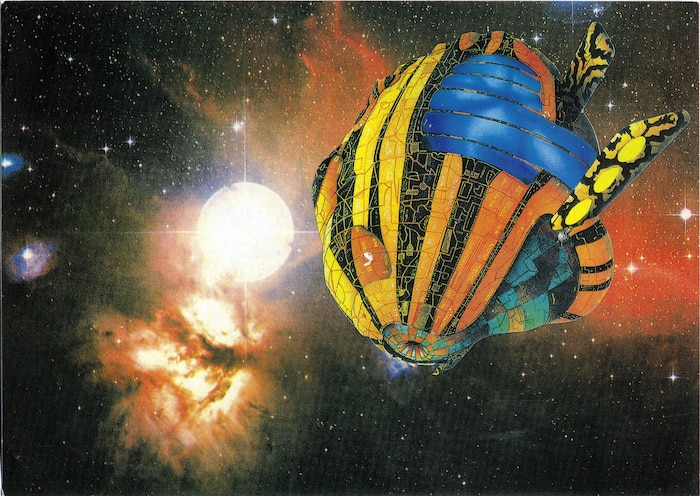
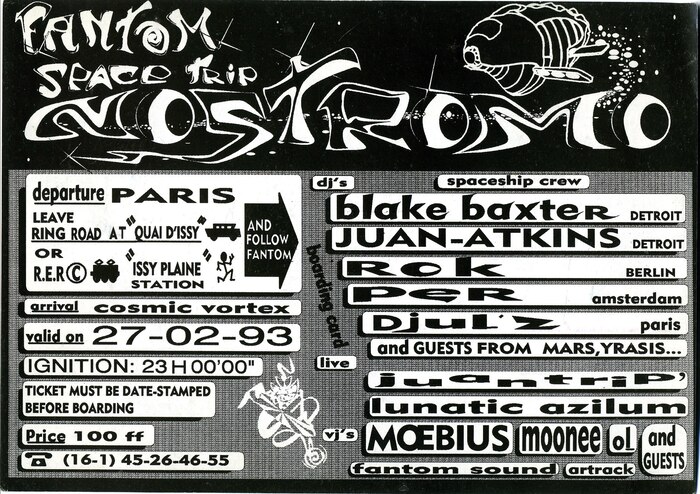
Last but not least were the Fantom collective nights, whose unadulterated success reached a fever pitch during the hallucinatory Nostromo parties of February 1993. A vast suburban warehouse complex in Issy was rented out a month in advance in order to adequately prepare the decorations and the multiple stages. Then, in the space of 12 hours, the site welcomed almost 5,000 people, who had come to lose themselves in a vortex of lights, smoke and lasers. It was a night soundtracked by the sounds of techno pioneers like Detroit’s Juan Atkins and Blake Baxter, as well as Berlin’s Rok, France’s D’julz and the Dutch genius Per, as well as Juan Trip and Lunatic Asylum’s trance and hardcore-inflected musical contributions.
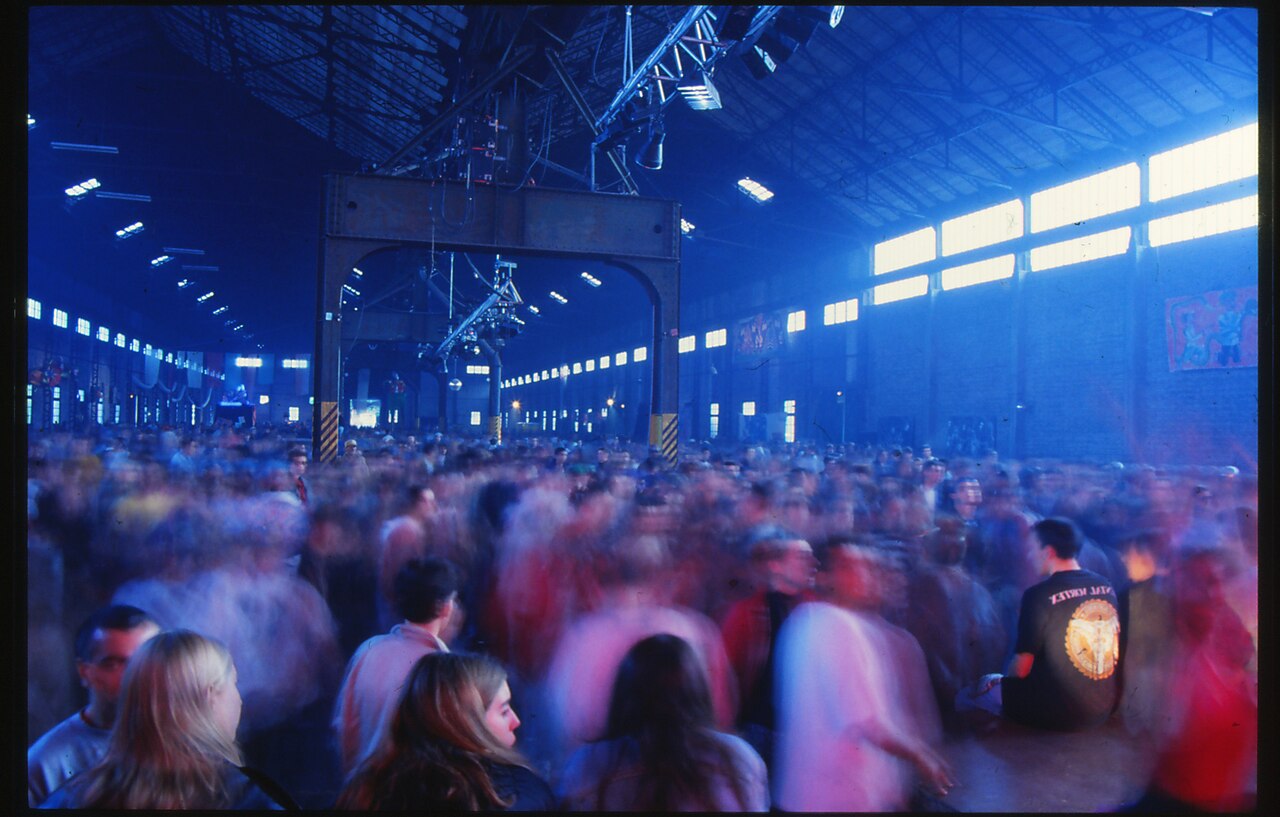
Ideology and utopia
The spirit of the Fantom tribe, a large volunteer collective whose average age was around 22, perfectly encapsulates the utopian dimensions of this golden age, mixing as they did an immersive audiovisual aesthetic with the ephemeral nature of raving and the principle of communion.
Rave mysticism, or an ideology of raving, already existed: the dream of a never-ending party and the perpetual pulse of its music, resonating inside each soul long after the last record had been played. According to Frédéric Djaaleb, “The movement’s principal ideologists, in the most positive sense of the term, were Manu Casana and Luc Bertagnol. Genuine militants, they were driven by the fervor of the spoken word, which was important for those of us that were younger.” Somewhere between ’80s punk and ’90s positivity, Casana had in fact co-opted the logo of the German Red Army Faction (an extreme left terrorist cell of the ’70s) for the Rave Age events and eponymous label, substituting a peace dove for the machine gun that sat in the center of its red star.

But it was undoubtedly Luc Bertagnol, founder of Cosmos Fact and organizer of the Mozinor parties, who was the most philosophically-driven of them all. The texts he occasionally composed for his flyers remain valuable artifacts of the untrammelled hope borne of the rave spirit at the turn of the ’90s:
“Our desire for a Better World and our thirst for Truth are intoned by our techno tattoo. (…) Music is a vibration that connects us to the implicit structures of the universe. Let us create from everything and from nothing, reconnect to nature, control through the creation of the digital tool, let us take our destinies in our own hands, elevate our consciousness, and by our chaotic action build a bridge to infinity. Let us act here or anywhere, but now. They would have us disillusioned; let us be inspired, and if they think that we are resigned, let us be determined.”
Twenty-five years after writing this text, and a few hours after being interviewed for this article, Luc sent an email confirming that “the fire still burns within [him].” “The radical novelty of the original 1990-92 French raves (the music, the drugs, the locations, the set-up and the crowds), brought transcendence rushing back into our lives, rekindling for many (and for a good while, too) the sacred fires of Hope. Electronic music at the time, all genres included, was innovative, evocative, phantasmagorical and powerful; it spoke to our brains, our guts and our souls. This sonic saga spun our heads and bodies about, making the moribund despair of this wheezing old world seem suddenly quite far away, while Rumi [Persian mystic of the 13th Century], the dervish prince, was whispering in our ears: ‘It is outside of myself, that I am Me.’”
Other organizers made do with more modest ambitions. Frédéric Djaaleb was satisfied with ”a unified smiling crowd and the sight of a skinhead” – temporarily forgiving his hatred – “dancing like a madman to Aphex Twin.” As for the Invader nights, Bernard Poussaint endeavored to curate the raves as ”gigantic works of art.” “What I loved doing,” Poussaint says, “was to get the audience to scream, plunging them into darkness, for example, before setting off fireworks: the atmosphere had to rise and rise and rise before it could begin to come back down. As though the rave and the public were a living body.”
There is a term, an idea, that is perhaps a little obscure but which perfectly captures the spirit of these young adventurers, and their legions of ravers: pronoia. The word, deriving from the Greek for “providence,” is a typically ’90s neologism, used at the time to describe the empathic mood that connected the majority of events and which could be summed up in the slogan: ”At any given time and unbeknownst to me, someone is conspiring towards my happiness.”
Most of rave’s old guard have probably retained something of this original philosophy. Few of them found their fortune in the rave industry, much less profited from the scene’s present revival. And fewer continued beyond 1994, a date when state and police repression, initiated by the Chirac government during the second coalition, dealt the scene severe blows.
Some, however, continued to follow the techno way. Fabrice Gadeau now manages the Parisian Rex Club with both rigor and fervor. Rakham continues to celebrate the libertarian and mystical spirit of the trance scene. And Manu Casana’s nostalgic P.U.R.E (Pure Underground Rave Energy) nights invoke the energy that first inspired to his Rave Age events.
Others may have taken different courses, but they remain true to the early ’90s energy from which they were first inspired. Poussaint would turn to artistic pursuits, and has contributed much of his time to the enlivening of Parisian squats. Dragoon Fly’s Olivier Martinoo is presently devoted to scuba diving and marine conservation. Cécile Alizon of Beat Attitude, the most “house” of the Parisian rave organizations, has pursued the practice of yoga. Luc Bertagnol spends part of the year on Goa’s beaches and in its salty waters. And Pat Cash, the hero of the scene, has long since departed for Israel, where he studies holy Jewish scripture.
